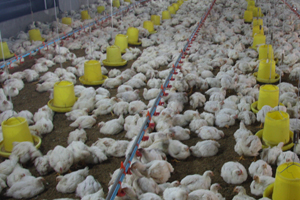Reducing oocysts excretion with feed additive

The protected combination of sodium butyrate and essential oils improves performance and reduces necrotic enteritis (NE) incidence in broilers. This combination promotes intestinal epithelium renewal and controls intestinal microflora.
However, it was still a question whether the protected combination of sodium butyrate and essential oils was able to control coccidia in the broilers.
A feeding trial was carried out to evaluate the efficacy of feed additive Natesse of Norel Animal Nutrition in broilers vaccinated against coccidiosis until 42 days of age. A total of 528 Ross 308 1-d old broilers were randomly assigned to one of the treatments (T1 Control and T2 Natesse) and vaccinated against coccidiosis at 3 days of age.
Natesse was supplemented to mash feeds based on corn, wheat and soybean meal at 1.5 and 1.0 kg/t feed in starter (0-21 days) and finisher (22-42 days) diets, respectively. Treatments were replicated 12 times, with 22 broilers each. Fresh faeces were collected at 3, 4, 5, 6, 7 and 8 days post-vaccination from 4 pens per treatment, and litter samples were collected at 10, 14, 21, 28, 35 and 42 days of age from 3 pens per treatment, to determine the oocysts excretion.
There were no significant differences between treatments in performance. The oocysts excretion in faeces at day 11 was 56.6% lower with Natesse supplementation (P=0.115). Also, no oocysts were detected in litter at day 35 when Natesse was used in the diet, opposite to Controls (P=0.116). It is concluded that excretion of oocysts was reduced with Natesse supplementation.
Join 31,000+ subscribers
Subscribe to our newsletter to stay updated about all the need-to-know content in the poultry sector, three times a week. Beheer
Beheer











 WP Admin
WP Admin  Bewerk bericht
Bewerk bericht